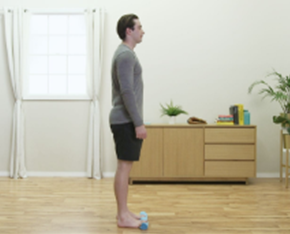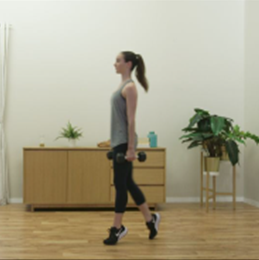Plantar fasciitis is a common injury that results in heel pain or foot pain depending on where the irritation occurs.
There is a thick band of tissue that runs along the underside of the foot that is formed of thick collagen and helps to give structural support and protection to the foot. When this tissue gets overloaded it can result in damage and irritation and ultimately pain in the foot and/or heel.
How plantar fasciitis develops
A common question heard in a physiotherapy room is “how, or why, does plantar fasciitis occur?” There are generally two common reasons for it to develop, less commonly it may be as a result of some trauma such as having trodden on something hard whilst bare footed, but more often than not it is linked to some sort of overloading.
This can happen in multiple ways, such as; increasing your exercise or activity levels suddenly, over training, introducing a new type of exercise or changing your footwear. Additionally there is often what we might call a biomechanical element to its onset.
Biomechanics is a term linked to how the body moves and deals with the forces placed on it as well as how it produces them. A commonly seen biomechanical feature in people suffering from plantar heel pain is flat footedness or having dropped arches.
In order to ascertain what the cause of your pain is sometimes requires a bit of detective work.
Why does Plantar faciitis hurt in the morning?
To understand this we must first understand some of the pathological behaviours of the injury. Originally we used to think the condition was linked to inflammation (swelling) of the plantar fascia, however more up to date research indicates that this may not be strictly the case.
The attachment of the plantar fascia to the heel bone, the calcaneum, experiences excessive strain which can cause micro tears in the tissue, a disruption to normal healing and then, with time, cellular changes. Overnight, as you sleep, the plantar fascia gets cooler and tighter in a relative sense. Consider it akin to your body being cooler and tighter before you exercise. When you wake up and put weight onto the foot / feet for the first time you stretch this tissue that has tightened up and has micro tears in it which produces a pain response. Once you have been walking for a few minutes the tissue warms up and becomes a bit more flexible and often the pain will begin to subside.
Will Plantar Fasciitis Heal by itself?
Maybe. It’s a vague answer to uncertain question. It is certainly possible for plantar fasciitis to heal itself over a period of weeks to months. It often depends on why it developed in the first place, how long you have had the symptoms and how much of a biomechanical influence is driving the problem.
Some people are fortunate to have a “flash in the pan” experience, others endure years of discomfort. If you are experiencing plantar fasciitis type symptoms for longer than a few weeks, especially if they are progressively worsening, then it is advisable to seek professional help from a clinician who can accurately diagnose your injury and provide the best advice on how to remedy the problem.
What treatments work for curing plantar fasciitis?
There are a few good remedies in the battle against heel pain. Although there is frequently overlap between patients and the treatments they receive, treatment selection will be based on individual circumstances.
Consider this example. Fiona, a 34 year old female runner is training for her 2nd marathon. She last ran one 6 years ago and since then has been participating in 10k runs. She has increased her mileage quite considerably in the last 8 weeks and has developed pain over the last two weeks. She is a bit flat footed and has tight calves. Compare her to Peter, a 56 year old chap, 10kg over his ideal weight, with very flat feet and has had pain for 12 months, and plays golf.
Whilst both of these patients may benefit from things such as taping, shoe orthotics and exercises, Fiona will also need to review her training schedule whilst Peter may benefit from starting a weight loss programme and shockwave therapy. This is where an individualised plan based on context and driving factors is important.
A list of common treatments includes:
- Taping to unload the plantar fascia
- Custom made or off the shelf orthotics
- Soft tissue work to the calf complex
- Shockwave Therapy
- Activity modification / alterations to training programme
- Review of footwear
- Running assessment
- Stretching and strengthening exercises to the calf and plantar fascia
What can I try by myself to cure plantar fasciits?
We always advise consulting with a clinician before embarking on any forms of treatment to prevent worsening of symptoms, or applying an inappropriate treatment to an injury masquerading as plantar fasciitis, but if you have a diagnosis and are looking for ways to try and self manage then check out our top 3 exercises:
- Stretching the plantar fascia
- Plantar Fasciitis heel raise
- Farmers Walks
Plantar fasciitis stretch


Stand with your toes against a step or the bottom stair of a staircase. Your toes should be up against the stepand able to bend backwards comfortbaly. Keep your knee straight and begin to lean forwards. This should result in your toes bending bakwards slightly and a feeling of stretch in both your calf an on the underside of the foot. Hold for 10-30 seconds depending on your tolerance and repeat 3-5 times.
Plantar Fasciitis Heel Raise Exercise



Start by standing with your feet shoulder width apart, toes resting on the towel, head up and chest tall. Keeping your legs straight, rise on to the balls of your feet, then lower your heels down to complete the exercise. Remember to keep your head up and legs straight throughout the exercise.
Tip Toe Farmers Walk Exercise

Holding dumbbells by your side, raise up on to tip toes. These should be an appropriate weight for you but between 5 and 10kg is fine, with heavier weights if necessary

Proceed to step forwards keeping your heels off the ground in a tip toes position

Continue walking forwards in this way for 5 to 10 meters, turn around and walk back before lowering your heals to the ground to finish the set. Complete 3 sets
Image Credit: Telehab our exercise prescription software from Vald

